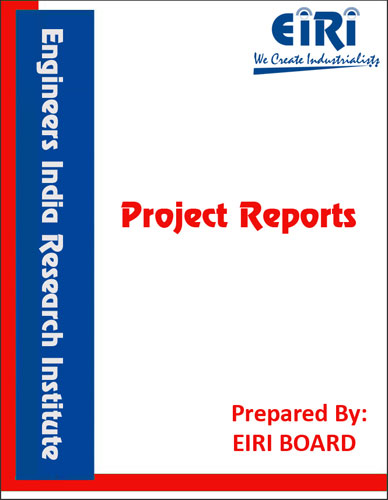CHLORINATED PARAFFIN WAX (CPW)
The project report includes Present Market Position and Expected Future Demand, Market Size, Statistics, Trends, SWOT Analysis and Forecasts. Report provides a comprehensive analysis from industry covering detailed reporting and evaluates the position of the industry by providing insights to the SWOT analysis of the industry.
We can prepare PROJECT REPORT as per your INVESTMENT PLAN for BANK LOAN REQUIREMENT and INDUSTRY ANALYSIS. All reports are prepared by highly qualified consultants and verified by a panel of experts.
Have Query? Click Here to Chat
Industry Expert is Online, Chat with him for more detail.

CPWs are chlorinated normal-alkanes with carbon chain lengths of between 10 and 30 carbon atoms and chlorinated to 40% to 70% by weight.
General formula for Chlorinated ParaffinsCxH(2x-y+2)Cly
Chlorinated paraffins (CPW) are made by chlorinating the paraffin fractions obtained from petroleum distillation. The paraffins are reacted with chlorine, resulting in chlorinated paraffins with varying degree of chlorination.
Chlorinated paraffins are classified as chlorinated hydrocarbons that have the general formula [CnH(2n-y)+2] cly. They were first prepared in 1858 by P.A Bolley. Significant commercial use of chlorinated paraffin did not develop until the early 1930, when they were first used for fire retardant and waterproof canvas material and in the material working industry as extreme pressure additives for lubricating oils. The raw materials used for chlorination consists of petroleum fractions such as normal paraffin { at least 98% Linear and wax freestones averaging as many as twenty from carbon atoms. There are a number of raw materials available however. These used for the production of Chlorinated paraffin’s fall into three categories:-
1. a C12 fraction that normally includes C9-C12 hydrocarbons
2. a C15 fractions that normally includes c13-C17 hydrocarbons.
3. a C24 fraction normally includes C20–30 hydrocarbon. The selection of a particular raw materials is dependent on the properties of the finished chlorinated paraffin. In metal contaminations are kept low as economically feasible since their presence results in products with Undesirable properties.
PHYSICAL & CHEMICAL PROPERTIES
Commercial chlorinated paraffins have20-70% chlorine content. The bulk of the manufactured product fall with in the 40-70% cl range. Table I contains a list of commercial chlorinated paraffins.. The important physical properties of the chlorinated paraffins include viscosity, solubility, Colour & thermal instability. For a given paraffin, increasing chlorine content enhances viscosity and specific gravity.
Chlorinated paraffins are miscible with many organic solvents such as aliphatic, aromatic, and terpene hydrocarbon, chlorinated aliphatic and aromatic hydrocarbons, hydrogenated napthas and ketons, esters and drying oils. They are insoluble in water, glycerol and the glycols. Water emulsions can be made with the use of proper emulsifying agents.
Chlorinated paraffins are relatively inert materials. Prolonged exposure to heat or light can cause dehydrochlorination. Depending upon Condition of exporoure, this can occur rapidly causing a darkening of the material. The presence of aluminium, Zinc and iron will catalyze the dehydro chlorination.
Stabilizers are normally added for storage purposes. Special or higher amounts of stabiliser may be used if conditions warrant. Common stabilizers used are unaligned epoxidized soyabean oils, penta erythritol, Organomettallic tin compounds or certain lead or cadmium compounds.
Water emulsions can be made with the use of proper emulsifying agents.
INTRODUCTION
USES & APPLICATIONS
B.I.S. SPECIFICATION
HANDLING & STORAGE OF CHLORINATED PARAFFIN
MARKET SURVEY & FUTURE SCOPE
APPRENT CONSUMPTION OF CHLORINATED PARAFFIN WAX
ESTIMATED DEMAND OF CHLORINATED PARAFFIN WAX
DETAILED EXPORT DATA OF CHLORINATED PARAFFIN WAX
HOW VARIOUS COMMERCIAL PRODUCTS DIFFER? MAJOR PRODUCERS
WHAT ARE THE MAJOR WAX MARKETS?
U.S. WAX PRODUCTION DATA
WHO ARE THE AMERICAN WAX PRODUCERS?
HOW WILL WAX MANUFACTURING DEVELOP IN THE FUTURE?
PRESENT MANUFACTURERS/SUPPLIERS OF CHLORINATED
PARAFFIN WAX (CPW)
LIST OF BUYERS FOR CPW
HOOKER INDUSTRIAL CORPORATION U.S.A
OVERSEAS MANUFACTURERS OF CHLORINATED PARAFFIN WAX (CPW)
DETAILS OF RAW MATERIALS
STORAGE HANDLING & SHIPPING OF CHLORINE
TRANSFER OF CHLORINE
MANUFACTURING PROCESS
HYDRO CHLORINATION, DEHYDRO CHLORINATION
CHLORINATION PROCESS
PROCESS & MANUFACTURE OF CHLORINATED PARAFFINS
INVENTORY CONTROLS AND TEST
PROCESS FLOW SHEET
PLANT LAYOUT
SUPPLIERS OF RAW MATERIALS
COMPLETE PLANT AND EQUIPMENTS
SUPPLIERS FOR CPW
SUPPLIERS OF PLANT & MACHINERIES
APPENDIX – A :
1. COST OF PLANT ECONOMICS
2. LAND & BUILDING
3. PLANT AND MACHINERY
4. FIXED CAPITAL INVESTMENT
5. RAW MATERIAL
6. SALARY AND WAGES
7. UTILITIES AND OVERHEADS
8. TOTAL WORKING CAPITAL
9. COST OF PRODUCTION
10. PROFITABILITY ANALYSIS
11. BREAK EVEN POINT
12. RESOURCES OF FINANCE
13. INTEREST CHART
14. DEPRECIATION CHART
15. CASH FLOW STATEMENT
16. PROJECTED BALANCE SHEET



